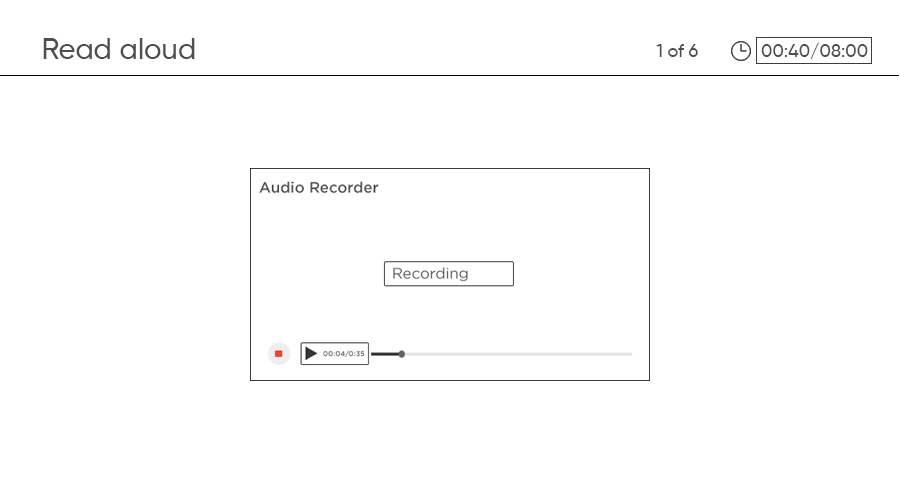The Pearson Test of English Academic (PTE-A) is an English language test comparable to the IELTS test, which is designed to assess the English language levels of the candidates. The scores are accepted for both migration and University entry in countries like Australia, the USA, the UK, Ireland, Singapore, Canada, and New Zealand.
PTE-Academic assesses the speaking, writing, reading, and listening skills of individuals.
The original timing, which was 3 hours earlier, has been reduced to 2 hours from 16 November 2021. As a result, the following changes in timings have been occurred in each section:
- The speaking section: 30 minutes.
- The writing section: 60 minutes.
- The reading section: 29-30 minutes.
- The listening section: 30-43 minutes.
With all these changes coming into effect, managing time effectively is essential for the PTE Academic Exam. Take a closer look at the time management strategies for each PTE component below:
- Speaking – Click the NEXT button in a timely manner
The time allocated for all 5 modules in the speaking section must be completed in the 30 minutes time frame. Any tasks left unanswered receive a score of ZERO. This timer never pauses even though the individual questions set timers per question in the middle of the screen for beginning in and Recording and even after expires. (refer to the given graphs below)
All tasks in the Speaking section, namely Read Aloud; Repeat Sentences; Describe Image; Retell Lecture and Answer Short Questions, have various given times (from 3 seconds to 35 seconds) to prepare and then complete the answer. To save the total time, it is possible to click next as soon as an answer is given, even if time is remaining to complete the answer. Please note the time to complete an answer has no effect on the score given; the main element is Oral Fluency.
Clicking the next button in a timely manner is extremely vital after the given time expires for the question (15 sec to 40 seconds) and a message appears stating the recording has finished and the mic has turned off; please note that the computer does not go to the Next screen until the “NEXT” button is clicked, which should not exceed 10 seconds after the above message.
Before

During

After

- Writing – Editing is the KING
Writing times vary from 10 minutes for Summarise Spoken and Written Text to 20 minutes for Write the Essay, However, as the total time does not accumulate for this section. In other words, if you receive two Writing Essay tasks and complete the first one in 15 minutes, you do receive 25 for the second one. Therefore, the maximum allowed time should be used.
Time should be divided into two aspects: half the time for content and format (number of words), and the other half for editing as the latter provides the majority of the marks. Do remember you must click the “NEXT” button before the timer gets to zero or the computer will NOT go the the next screen, which could dramatically lower your writing score,
- Reading – Allocate more time on high-scoring task(s)
This section is unique because time DOES accumulate and decrease per question and carries over to the next section of reading until all 5 sections of the reading have been completed; time does NOT accumulate for the Listening Modules For example, in the 1st section for (Reading/Writing) Fill in the Blanks, the recommended time is about 3 minutes per screen which contain 5-6 answers – about 30 seconds per answer; if you take only 10 seconds to answer the first gap, then you have 50 seconds for the next one; if you finish the enquirer screen in 2 minutes, then you have 4 minutes for the next. If you go too slow, then you simply need to make up the time at some point. The key is to allocate more time based on which modules contain the highest marks. Therefore, taking more time on Fill in the Blanks is extremely wise! Also, the particular band score desired can influence the time spent on each module as well.
- Listening – Take additional allocated time in the last module
In this section, a small time (5-10 seconds) is given to prepare, and then you can answer as you listen; however, you CANNOT click the “NEXT” button even if you have answered already if the speaker is talking; in other words, you cannot try to make up time! You must still click “NEXT” after the speaker STOPS! The option is available to take additional allocated time AFTER the speaker completes the lecture. This time MUST be managed wisely as there is limited time (22 to 23 minutes) given to complete all the listening questions; and the most vital questions are in the last module with Write from Dictation.
Apart from these section-specific ways to effectively manage time, here are a few other aspects for individuals to focus on:
- Understand all the sections of PTE and the format thoroughly.
- Many question types in the PTE exam require vocabulary and speaking skills. Individuals can practice and build their vocabulary accordingly. Practising well for the PTE would help individuals understand their strengths and weaknesses.
- Set a study schedule and practise different types of questions to get better at time management.
- Develop a focus on the task at hand as PTE does not allow for any extra time.
From mock tests and expert guidance to all the tips and tricks to crack PTE, Apeiro Training Services offers a productive environment to learn and obtain a high band score. Visit Apeiro Training Services to know more!


